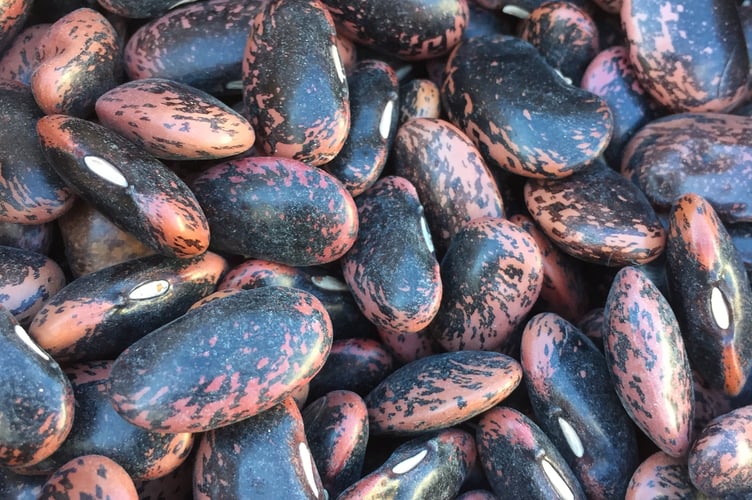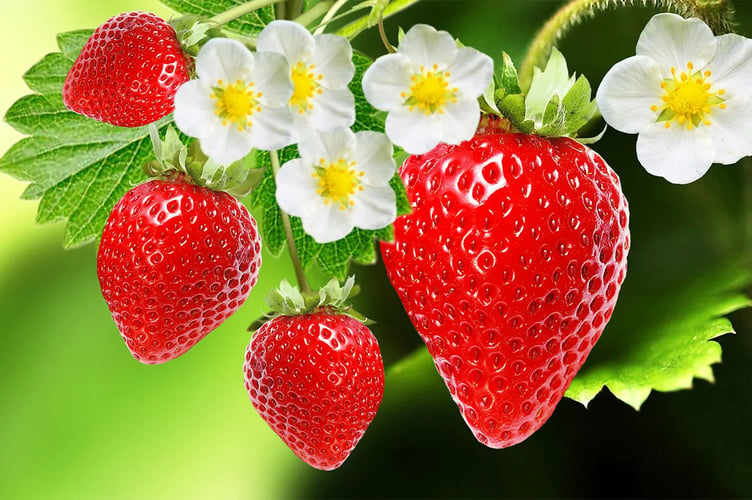PROPAGATING your own plants may sound daunting but, in fact, the actual job is simple and enjoyable if you work from healthy parent plants and observe a few common-sense rules.
You can get plants for free by collecting seed, taking cuttings or dividing root balls, and all you will need to do the job is a few containers, some gritty compost, and envelopes to store the seeds.
Here are the basics of the main propagation methods which will bring you new plants from old. For beginners it can be a case of trial and error but you should have enough success to make the experience worthwhile by saving money on seeds and commercially-grown seedlings.
LAYERING is a simple form of propagation which just involves bending a shoot down to soil level and encouraging it to root.
You can try this with hybrid clematis and honeysuckle. When layering, select pliable stems from this year’s growth. Wisteria is usually easy to propagate, either layering directly into the soil or into a pot. Viburnums are worth trying, too - often they propagate themselves without any help.
New fruit bushes can also be successfully produced by layering. Strawberries, for instance, will produce plantlets on long shoots which can be pegged to the ground or into pots of compost. They can be planted out at the end of September.
Cane fruits like blackberries, loganberries, tayberries and other hybrids can also be propagated by layering. Once they start to make substantial new growth they can be cut away from the parent plant.

SAVING AND SOWING. Leave a few seed heads on perennial plants after they have flowered. Save in an envelope, keep in the dry place, and sow next spring.
It’s as simple as that, but there are a few things you should know. For instance, you can’t save seed from F1 (hybrid) varieties. Seeds must be dried properly, but not with heat, and broad beans should be left on the plant until the pods become dry and wrinkled.
French and runner beans should be treated in the same way and peas should be allowed to mature in their pods until the seeds start to rattle. When the pods are really dry, shell the peas and store them until spring.
BASAL CUTTINGS are new growths which shoot up in spring from a crown or tuber. Remove them at ground level and pot them in gritty compost to encourage them to form roots. This way you can get new plants from border perennials like delphiniums and dahlias.
ROOT CUTTINGS. In simple terms, this involves digging up a plant, cutting off small pieces of root and potting them up. Ideal species to use include poppies, acanthus, phlox, mint, verbascums and primulas.
Take cuttings vertically for thick-rooted plants, and horizontally for thin-rooted types. Take cuttings while plants are dormant - often by the end of September.
STEM CUTTINGS propagation involves removing pieces of stem and potting them up to encourage them to develop roots. Softwood stem cuttings can be taken now, but those from hardwood plants are best taken in autumn and winter.
Hardwood cuttings can take several months to produce roots, so leave them at least a year before transplanting into the garden.
Producing your own plants invariably means you’ll have some to spare which can be swapped with other gardeners for something you haven’t been able to grow. And knowing that they haven’t cost anything, can’t help but make them a bit special.

JUST THE JOB
What to do in West Somerset Gardens in September
This should be a golden month in Westcountry gardens when the majority of your produce, particularly fruit, is ready for picking. But remember that careful harvesting and storage are vital. Mistakes can undo the good work of a whole season.
PLANTING
Planting-out time for wallflowers. Try them in a sunny border near the house for maximum enjoyment. Pinch out the terminal bud to encourage more bushy plants.
Spring cabbage should be ready for transplanting this month. They will benefit from a handful of lime for each plant and don’t forget some bird protection.
Now is the time to plant spring bulbs. A neighbour claims the best way of getting natural-looking daffodils is to throw them on to the grass with a shovel and plant them where they land!
PRUNING
Rambling and climbing roses should be pruned after flowering. Ramblers should have a few old shoots removed at the base, with the laterals on the remainder trimmed to about 10cm. Most climbers will need little pruning apart from removing dead or damaged wood.
Finish summer fruit tree pruning, taking back all new side shoots to three or four leaves. Put on grease bands at the end of the month.
This is reckoned to be the best time for root-pruning over-vigorous apple trees. Dig a narrow trench encircling the tree at a radius of about 1.5m and cut off all the large roots which cross the circle.
HARVESTING
Maincrop onions should be wilting and yellowing so lift the bulbs and leave them to dry for a few days, turning occasionally.
Maincrop potatoes should also be lifted, dried in the sun and stored in paper sacks. Any damaged potatoes should be used immediately otherwise they will spoil the stored crop.
Unripe tomatoes are unlikely to progress much more, so pick them and take them indoors. They will ripen quite satisfactorily in paper bags or drawers.




